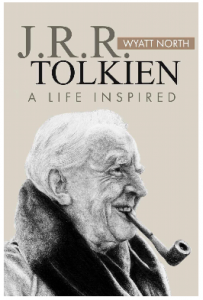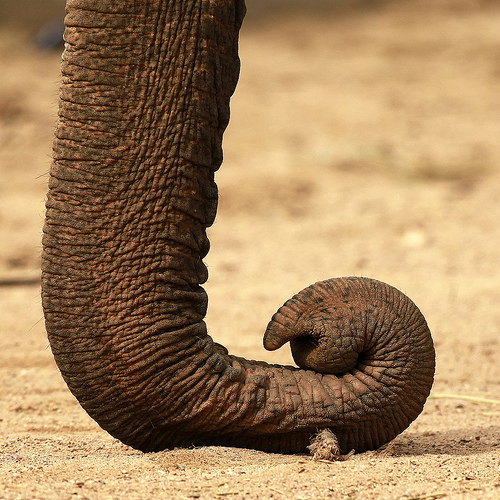This was first posted in January of 2004.
I first read The Lord of the Rings the summer I turned ten. My elder siblings had all read it, and I wanted to know what it was all about. I remember spending one entire afternoon and early evening sitting in a lawn chaise on our patio, continuing to read as the sun went down and it got darker and darker, because I was in a hurry to finish and find out what happened.
Bang! That was it; The Lord of the Rings was officially my favorite book. And it has remained so.
I first read my siblings’ copy of the trilogy–the Ballantine Books edition with the weird psychedelic covers. Oddly, I still have it. Later, my mother gave me (for Valentine’s Day, which was not usually an occasion for such things) a boxed set of the trilogy in paperback. That was the one with a big photograph of Tolkien’s head in profile on the back of each volume and Tolkien’s own paintings on the front. I no longer have this set; I wore it out.
Over a period of several years Mom got me my own hardcover editions of The Hobbit (the green edition with the tooled binding that comes in a matching green box) and The Lord of the Rings (the boxed set with the Eye of Mordor on the spine of each volume); and later, when they came out, The Silmarillion and Unfinished Tales as well. That’s one of the things about my Mom; she didn’t like that kind of fiction, and was rather inclined to think it was probably garbage–but she knew what I loved.
I took the whole set off to college with me, reasoning that at some point in any given year I was going to want to re-read the whole thing. I find it hard to remember precisely, but I expect that I probably re-read the trilogy at least once a year from the time I was ten until after I graduated from college.
In the last fifteen years that rate has slowed down considerably. I last read the trilogy in December of 2000; this December, I watched Peter Jackson’s version of The Return of the King. And though it was a grand spectacle, it just wasn’t right somehow; it didn’t satisfy. And though in the ordinary scheme of things it would probably have taken another year or two, the movie prompted me to pull The Fellowship of the Ring down from the shelf. Late last night, I finished The Return of the King (reading large snatches of “The Scouring of the Shire” to Jane. And I was happy.
What first attracted me to Tolkien was, naturally, Bilbo’s and Frodo’s adventures. What kept bringing me back was my realization that Tolkien had created an entire world, with its own history and literature and languages, a world nearly as complete and detailed as our own. And that was cool!
In his essay “On Fairy Stories,” Tolkien talks about the creation of such a fantasy world as “subcreation,” as the activity in the exercise of which we are most clearly created in God’s image. By that time I knew just what he was talking about–because I’d seen him do it.
The way I read the The Lord of the Rings has changed over the years. I remember racing through the first half of The Two Towers, and the first half of The Return of the King as fast as I could, because I wanted to get to the part about Frodo and Sam. Aragorn, Legolas, and Gimli got short-shrift. By the time Frodo and Sam got to the Cracks of Doom, I was going so fast I completely missed what happened with Frodo and Gollum and the Ring. And the Scouring of the Shire was a horrible shock–endings were supposed to be happy. Let’s face it, I wasn’t a very careful reader in those days.
The last two or three times through the trilogy I’ve made it a point to read slowly rather than quickly–to savor the fine details and the bits of landscape and the shadings of emotion, and the things that are present simply because that’s the way Tolkien’s world is. When Tom Bombadil escorts the hobbits on the way to Bree, he sees a hill that makes him sad, though he won’t speak of the cause. We don’t know what memory the hill evoked in Tom’s mind; it doesn’t come into the story.
Why does Tolkien tell us about Tom’s sadness? We think of history as chronology, as a time line, but history is also geographical. Every hill and every valley has its memories. And Tolkien knew that at that place was a memory to sadden even the mercurial Tom Bombadil, and to have left it out would have been to lie.
These days, ironically, I find that the chapters I cherish are precisely those I skimmed on first reading: Aragorn, Gimli, and Legolas chasing the orcs across the fields of Rohan; the passing of the Grey Company through the Paths of the Dead; the seige of Minas Tirith; the parley before the Black Gate; the celebration on the Field of Cormallen; the Scouring of the Shire. Some I read with laughter; some I read with tears; all I read with great joy.
Of the books of my childhood, The Lord of the Rings stands alone. Most of the books I loved as a child I’ve outgrown. A few I remember with great fondness. Fewer still (notably the Narnia books) I continue to read and enjoy. But only Middle Earth has grown with me, deepening with every passing year.
Everything I said here still stands, I find; except that of course I’ve read it multiple times since then, including once out loud to my sons, and once out loud to all four of my kids.











